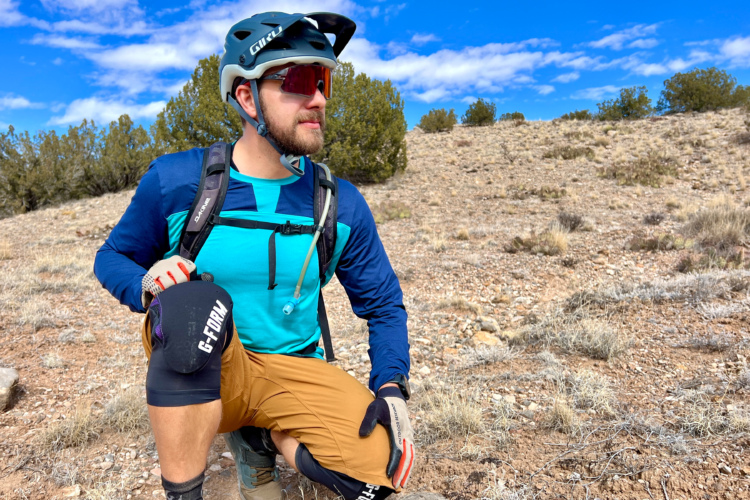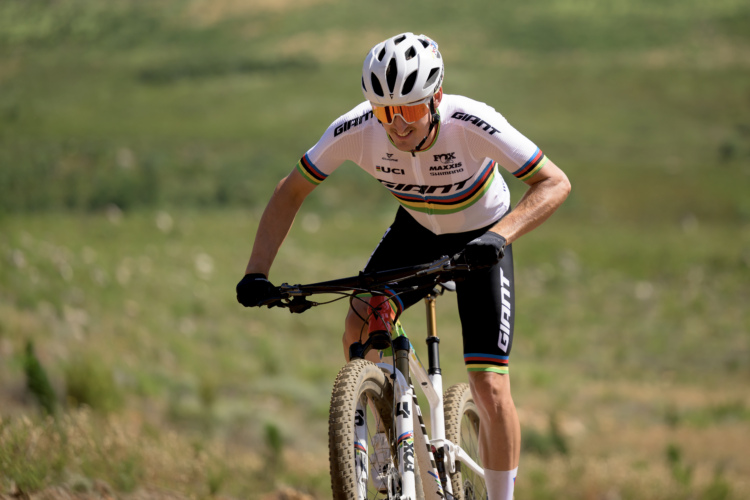
The new Giro Loam Knee Sleeve offers lightweight knee protection for trail rides with comfort that can last for hours. Unlike a knee pad that’s designed for big impacts, a knee sleeve offers protection for small scrapes and slides, but in a package that is generally more flexible (read: better for pedaling) than a full-on knee pad. A knee sleeve like the Loam can be the perfect choice for pedal-forward rides with few major obstacles.



Giro Loam Knee Sleeve key specs
- 8mm Trivent XTI padding from D30
- Ax Suede Stretch microfiber knee zone
- Hi-vent stretch mesh back panel
- Weight: 233g/pair
- Price: $120
- Buy from Amazon
The first thing I noticed when pulling the Giro Loam Knee Sleeves out of the box was just how light and low profile they are. The pads lie flat on the table, and are easy to stuff in a fully loaded pack without taking up much storage space. But of course, the purpose of sleeves such as the Loam is to wear them for the entire ride, and thanks to their light 233g weight for the pair, they won’t weigh you down even after hours in the saddle.
The heavy-duty silicone gripper on the upper successfully held the pads up through multiple rides, including extended climbs. The lower also has a built-in gripper, although it is lower-profile than the upper, which helps when sliding the pads on. Throughout my rides, the Loam stayed very reliably in place, unlike some other pads I’ve tested recently.
Even during long pedals, I found the hi-vent back panels to be very breathable and comfortable.

What happens when ‘flexible’ knee sleeves don’t flex?
Since the silicone grippers and the stretchable mesh backing were excellent, I found it curious that the one part of the pad that should flex the best did not, in fact, flex well: the pad itself. As noted above, the pads lie flat in the box, as in flat as a piece of cardboard — and they feel like it, too. When I donned the pads, the Trivent XTI D30 padding bent around the knees, but there was no ergonomic forming or flex zone incorporated into the pads whatsoever.
As you can see in the images, the corners and edges of the pad bend and buckle when your leg is bent, such as when moving through the pedal stroke. To me, it seems very strange that a knee sleeve marketed for its flexibility and comfort doesn’t incorporate any ergonomic forming into the pad itself.
I’ve tested heavier-duty pads with radically better ergonomic forming in the pad itself than these so-called “flexible” knee sleeves — for example, the G-Form Terra and the Ion Arcon LT, which I am currently testing.
Above and beyond the strange and somewhat uncomfortable sensation around the edge of the pads, I’m also concerned about the long term durability. Crimping and binding where the pad is sewn to the lightweight sleeve could conceivably cause tears to develop over time, but this testing period was not long enough to reach the point of failure.
Share your Giro Loam Knee Sleeve review
Fit notes
While I found the pads to fit fairly true to size, unfortunately, Giro does not publish a size chart for the Loam Knee Sleeve. So, while you can purchase the Loam on multiple websites, I’d recommend trying them on before you buy.

Pros and cons of Giro Loam Knee Sleeve
Pros
- Lightweight
- Flexible back is comfortable for pedaling
- Silicon grippers keep sleeves in place
Cons
- Padding bends around the edges when flexed
- No size chart
Bottom line
The Giro Loam Knee Sleeve is lightweight and stays firmly in place, even during long climbs. However, the lack of ergonomic consideration in the design of the padding causes the pad to bunch and crimp along the edges when the knee is flexed and when pedaling. For a product that’s supposed to be flexible and comfortable, the lack of ergonomics here seems to be a big miss.











1 Comments
3 days ago